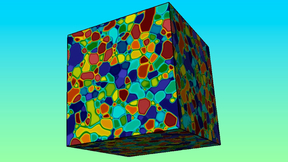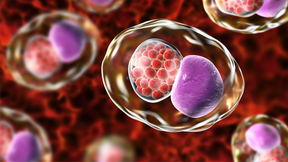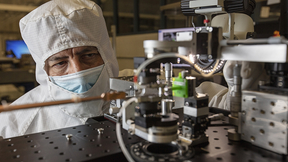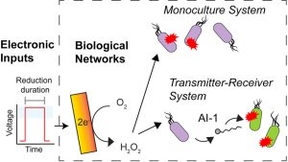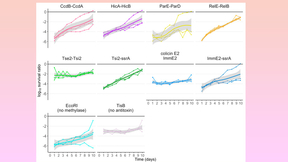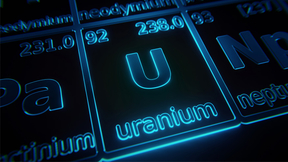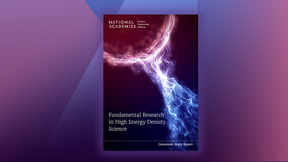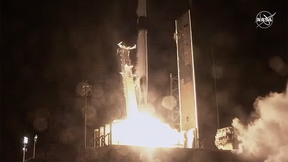Back
Titanium (Ti) and its alloys are attractive for a wide variety of structural and functional applications due to the metal’s excellent strength, toughness and stiffness, and corrosion resistance. Specific applications include lightweight structural materials, bioimplants, and energy storage materials. However, if exposed to hydrogen sources, these alloys are susceptible to…
Chlamydia trachomatis is the most common bacterial sexually transmitted pathogen in the world and can cause ocular, respiratory, and gastrointestinal infections. As the number of chlamydial infections continues to increase, there is a growing and urgent need for the development of a safe and efficacious vaccine. In a new study, researchers from LLNL and UC Davis tested…
The dangers of coastal erosion are an all-too-familiar reality for the modern residents of California’s iconic mountainous coastal communities. With a new tool, researchers are now bringing historical perspective to the topic of how to manage these disappearing coastlines. Using a model that incorporates measurements of the amount of time coastal cliffs and their remnant…
Part 8 in a series of articles describing the elements of Lawrence Livermore National Laboratory's fusion breakthrough. The intricate, delicate targets used in Lawrence Livermore National Laboratory (LLNL)’s National Ignition Facility (NIF) experiments are marvels of design, engineering and precise manufacturing. “We’ve been working over the last 16 years on continuously…
Lawrence Livermore National Laboratory (LLNL) is celebrating National Physics Day (April 24) by highlighting just a few of the thousands of physicists that work at the Lab. Physics is a scientific practice that seeks to understand the way the universe behaves by examining properties of matter and energy. Representing a cross-section of the broad scope of focus areas and…
Cell death and lysis (breakdown of a cell) play an important role in a wide array of biological processes. Scientists propose that the genetic “programming” of microbial cell lysis could provide new methodologies for biomanufacturing and biocontainment. To this end, LLNL and collaborators at the University of Maryland are focused on developing robust and generalizable…
In 1888, Walther Nernst proposed a universal relation between a charged particle’s electrophoretic mobility (a solute’s velocity in response to an applied electric field) and its diffusion coefficient (the rate at which a particle free-diffuses through medium). The microscopic origins of this relation were revealed in 1905 by Albert Einstein. These works cemented the…
Synthetic biology promises to sustainably produce commodity chemicals, treat human disease, steward the environment, and sustain agriculture. Each of these tasks exploit genetically modified organisms (GMO), but the unintended release (referred to as “escape”) of GMOs or their recombinant (non-native) DNA could disturb native ecosystems in unpredictable ways…
Uranium metal is a recognized nuclear fuel for sodium fast reactors due to its significant thermal conductivity and high burnup capability, among other beneficial properties. However, metallic uranium-based nuclear fuels undergo physical phenomena that are poorly understood on a fundamental level. These phenomena include gaseous swelling, redistribution of constituents, or…
There is a growing interest in understanding the performance and properties that make ultra-high temperature ceramics (UHTCs) promising for extreme environment applications, such as hypersonic platforms, nuclear reactors, and atmospheric re-entry. UHTCs are inorganic materials that exhibit metallic conductivity with melting temperatures above 3000 °C. One such material,…
Four Lawrence Livermore National Laboratory (LLNL) postdoctoral appointees have been selected to attend the 72nd annual Lindau Nobel Laureate meeting in Germany this summer thanks to the University of California President’s 2023 Lindau Nobel Laureate Meetings Fellows Program. The four selected to attend are Wonjin Choi, Sean Leonard, Sijia Huang and Sarah Sandholtz. The…
Through machine learning, a Lawrence Livermore National Laboratory (LLNL) scientist has a better grasp of understanding materials used to produce hydrogen fuel. Water is everywhere in the environment and its interaction with metal oxide surfaces has a key role in processes that range from wetting, dissolution and corrosion to photocatalytic reactions. The relative…
Part 5 in a series of articles describing the elements of Lawrence Livermore National Laboratory's fusion breakthrough. If Lawrence Livermore National Laboratory (LLNL)’s National Ignition Facility (NIF) were a race car, it would run at the redline most of the time. “NIF is the only laser system that intentionally operates above the laser damage growth threshold,” said…
Lawrence Livermore National Laboratory scientists have developed a theoretical model for more efficient molecular-level simulations of cell membranes and their lipid-protein interactions, part of a multi-institutional effort to better understand the behavior of cancer-causing membrane proteins. Developed under an ongoing collaboration by the Department of Energy (DOE) and…
The National Academies of Sciences, Engineering, and Medicine released a report, Fundamental Research in High Energy Density Science, which identifies key challenges and science questions for the field of High Energy Density (HED) science for the coming decade and proposes ways to address them. The report follows a year-and-a-half-long consensus study by a committee of 13…
Lab physicist William Evans has been selected to serve on the board of directors for the Fannie and John Hertz Foundation, a nonprofit organization dedicated to empowering the most promising innovators in science and technology. Evans is the physics division leader in the Physical and Life Sciences Directorate at Lawrence Livermore National Laboratory (LLNL), which works…
A prototype telescope designed and built by Lawrence Livermore National Laboratory (LLNL) researchers has been launched from Cape Canaveral, Fla., to the International Space Station (ISS). Known as the Stellar Occultation Hypertemporal Imaging Payload (SOHIP), the telescope uses LLNL patented-monolithic optics technology on a gimbal to observe and measure atmospheric…
When it comes to studying particles in motion, experimentalists have followed a 100-year-old theory that claims the microscopic motion of a particle is determined by random collisions with molecules of the surrounding medium, regardless of the macroscopic forces that drive that motion. Scientists at Lawrence Livermore National Laboratory (LLNL) and the Massachusetts…
The nitrate runoff problem, a source of carcinogens and a cause of suffocating algal blooms in U.S. waterways, may not be a harbinger of doom. A new study led by the University of Illinois Urbana-Champaign and researchers from Lawrence Livermore National Laboratory (LLNL) demonstrates an approach for the integrated capture and conversion of nitrate-contaminated waters into…
On the morning of Feb. 15, 2013, a small asteroid exploded over Chelyabinsk, Russia, sending a loud shockwave and sonic boom across the region, damaging buildings and leaving around 1,200 people injured. The resulting meteor, with a diameter of approximate 20 meters (roughly the size of a six-story building), was one of the largest to be detected breaking up in the Earth’s…

